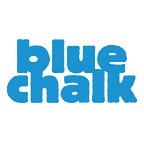Production in the Time of COVID: What We’ve Learned
They say without deviation from the norm, progress is not possible. For those in video production, the past twelve months have been the biggest deviation from the norm we ever could have imagined. They have also been some of the most creative and innovative months of our careers.
As the world begins to open up and we head back out on more traditional productions, we wanted to take this opportunity to reflect on two COVID-era projects that forced us to think on our feet and develop innovative approaches that are different from anything we’ve done before.
The first of these projects is “Breathe New Life 2.0.” For this film, we were tasked with creating a “hero” story about a real chronic obstructive pulmonary disease (COPD) patient and show how she took control of her diagnosis and life. From the moment we were hired for this project we knew it would need to be done remotely. Time was tight and, most importantly, those living with COPD have a higher risk of poor outcomes if they contract COVID. Sending our team to film on location was not an option.
Our original idea was to do a story based on user-generated content (UGC) captured on an iPhone by our main character, Bernice. But, as soon as our team learned that Bernice was an artist, they knew this was the perfect opportunity to utilize the skills of our in-house graphics department and incorporate real art into the piece.
To make this happen, our producers did a pre-interview with Bernice to learn more about her and then created a script based on her answers. Then, they developed a production book that contained a shot list of the content Bernice needed to capture herself with her iPhone. They also mailed her a microphone so that she could record audio voiceover remotely.
It was important to our team that the graphics and illustrations in the film remained authentic to Bernice’s style, so they also consulted with her about the colors and painting techniques she uses in her work. With that information, they went ahead and set up an in-studio production where our Director of Photography Jason Greene captured our Graphic Designer and Artist Miró Merrill as she created art inspired by Bernice’s work.
While figuring out how to present the story in a visually engaging way was challenging, the creative evolution of this project was incredibly rewarding. Reflecting on this, Kenzie Bruce, Blue Chalk’s creative manager and one of the film’s producers, said, “From how I envisioned the final product looking, to how Miró pictured the art, to how Jason visualized capturing it, to how Tim McLaughlin, our editor, pictured editing it, the project went through multiple creative iterations and turned out better for it.”
Working on this project also taught Kenzie’s co-producer, Mariko Fujinaka, that challenges can often lead to better outcomes, “I learned there are hidden opportunities in every project,” Mariko said. “As we heard from Bernice in the film, ‘what presents itself may not be what I expected, but it may be what I need.’”
Similar to “Breathe New Life 2.0,” our most recent film for Open School, an alternative school in Portland Oregon, required us to reconceptualize our traditional production approach.
We have produced films for Open School’s annual fundraiser for the last several years and have always enjoyed visiting campus to capture the students and teachers who work so hard to make it such a special learning environment. Due to COVID, that was not possible this year. Instead of sending an in-person team to film interviews, we tasked the Open School students themselves with virtually interviewing their teachers, or “advocates,” as they’re referred to by Open School.
Producer Emma Decker was the person in charge of guiding the students through a crash course in the basics of interviewing. Emma explained, “We went over how to formulate good questions, how to think on your feet, how to ask follow-up questions, and interview etiquette. I also tried to emphasize with them that the best interviews are not a one-way street — they should feel like natural conversations where both parties take part and ask questions.”
These virtual interviews turned out to be the stars of this project. “It was so cool to see the students show up to the interview with their own unique list of inquiries and totally rock it,” Emma said. “I also loved watching the special bond these student/advocate pairs have shine in the interviews. They were so trusting and open with each other, which resulted in some really special moments, stories, and even a few tears.”
So would our team have approached the projects the same way if COVID had not been an issue? Kenzie isn’t certain. “The pandemic has been horrible, but I will say it has forced us to think in creative ways I’m not sure we would have if we didn’t have to. In a sense, there’s been something unlocked while thinking about how to represent stories differently and still produce them to the Blue Chalk standard.”
“I think the pandemic forced a lot of production companies to embrace the possibilities of remote production,” says Mariko. “If COVID hadn’t been an issue, we most definitely would have filmed in person. But a positive outcome is that we now have more options — we don’t always have to go film on location; we can tell stories just as effectively and creatively using a remote setup.”
Emma also agrees that the pandemic has forced us to build a new skill set that will be put to use in the future. “I’ll be glad when the day comes that we don’t have to rely on recorded video calls to make films, but I think this is a great skill that Blue Chalk now has in its back pocket that could be useful for certain situations post-pandemic.”
